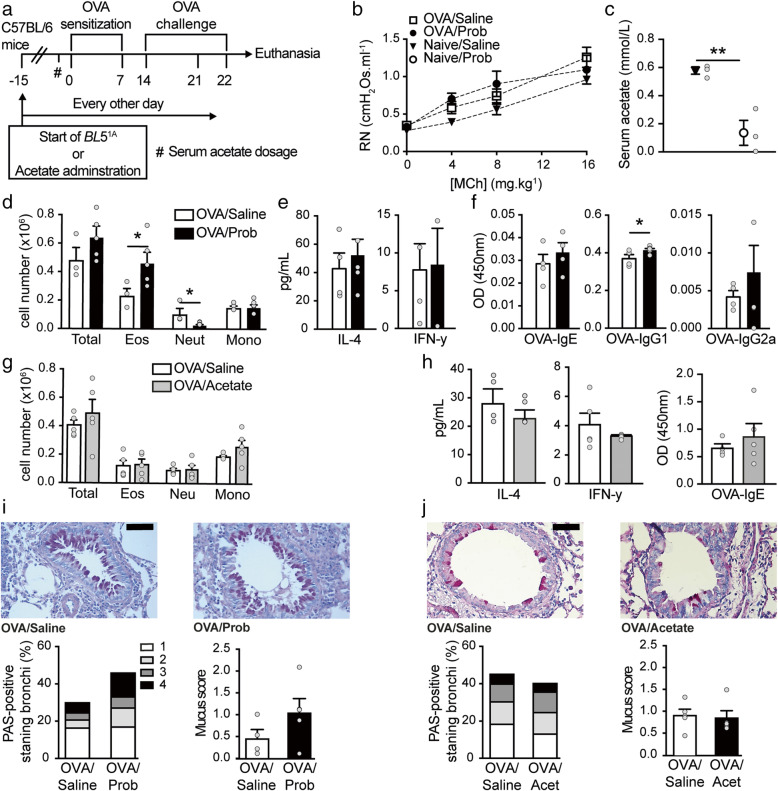Fig. 2.
Oral acetate-producing bacteria do not prevent airway inflammation in C57BL/6 mice. a Schematic representation of the OVA-inducing airway inflammation protocol and Bifidobacterium longum 51A (BL51A, Prob) or acetate administration in C57BL/6 (C57BL/6) mice. b Measurement of airway responsiveness (AHR) as assessed by Newtonian airway resistance (Rn) to increasing doses of methacholine in the OVA/saline, OVA/Prob, naive/saline, and naive/Prob groups (n = 4–5). c Levels of acetate (mmol/l) in the serum of the saline and Prob-naive groups (n = 3). #Acetate measurement 24 h before sensitization. d Total and differential (Eos, eosinophils; Neut, neutrophils; Mono, mononuclear) number of cells in the bronchoalveolar lavage (BALF) of the OVA/saline and OVA/Prob groups (n = 4–5 mice per group). e Levels (pg/ml) of interleukin (IL)-4 and interferon (INF)-γ in the BALF of the OVA/saline and OVA/Prob groups (n = 4–5 mice per group). f Total amount of OVA-specific IgE, IgG1, and IgG2a in the serum of the OVA/saline and OVA/Prob groups (n = 4–5). g Total and differential (Eos, eosinophils; Neut, neutrophils; Mono, mononuclear) number of cells in the BALF of the OVA/saline and OVA/acetate groups (n = 5). h Levels (pg/ml) of interleukin (IL)-4 and interferon (INF)-γ in the BALF and OVA-specific IgE in the serum of the OVA/saline and OVA/acetate groups (n = 5). i PAS-stained formalin-fixed histological sections of the lungs of the OVA/saline and OVA/Prob groups; scale bar represents 50 μm (×200 magnification, one representative of at least five), relative score and proportion of PAS-positive bronchi. j PAS-stained formalin-fixed histological sections of the lungs of the OVA/saline and OVA/acetate groups; scale bar represents 50 μm (×200 magnification, one representative of at least five), relative score and proportion of PAS-positive bronchi. The results are shown as mean ± SEM. Statistical significance was determined using Student’s t-test and ANOVA (with Tukey post-test) where appropriate (**p < 0.01). Data represent two independent experiments. See also Figure S1

